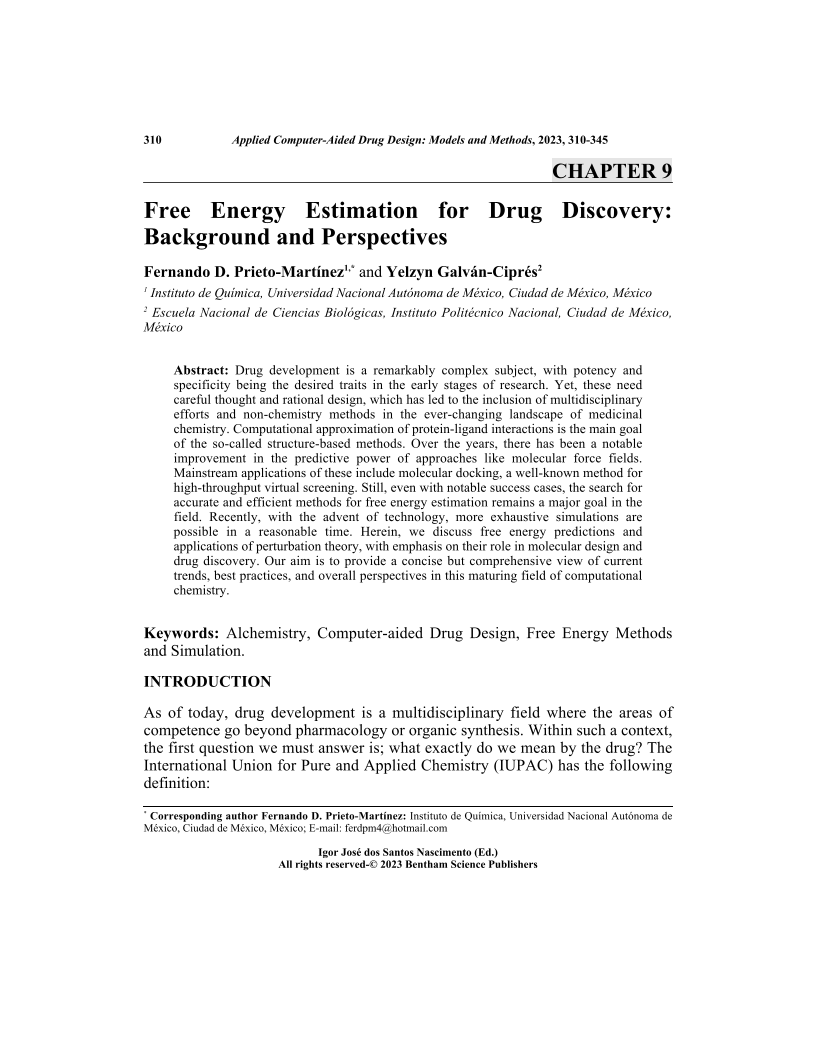Free Energy Estimation for Drug Discovery: Background and Perspectives

- Authors: Fernando D. Prieto Martínez1, Yelzyn Galván-Ciprés2
-
View Affiliations Hide Affiliations1 Instituto de Qumica, Universidad Nacional Autnoma de Mxico, Ciudad de Mxico, Mxico 2 Escuela Nacional de Ciencias Biolgicas, Instituto Politcnico Nacional, Ciudad de Mxico, Mxico
- Source: Applied Computer-Aided Drug Design: Models and Methods , pp 310-345
- Publication Date: December 2023
- Language: English
Free Energy Estimation for Drug Discovery: Background and Perspectives, Page 1 of 1
< Previous page | Next page > /docserver/preview/fulltext/9789815179934/chap9-1.gif
Drug development is a remarkably complex subject, with potency and specificity being the desired traits in the early stages of research. Yet, these need careful thought and rational design, which has led to the inclusion of multidisciplinary efforts and non-chemistry methods in the ever-changing landscape of medicinal chemistry. Computational approximation of protein-ligand interactions is the main goal of the so-called structure-based methods. Over the years, there has been a notable improvement in the predictive power of approaches like molecular force fields. Mainstream applications of these include molecular docking, a well-known method for high-throughput virtual screening. Still, even with notable success cases, the search for accurate and efficient methods for free energy estimation remains a major goal in the field. Recently, with the advent of technology, more exhaustive simulations are possible in a reasonable time. Herein, we discuss free energy predictions and applications of perturbation theory, with emphasis on their role in molecular design and drug discovery. Our aim is to provide a concise but comprehensive view of current trends, best practices, and overall perspectives in this maturing field of computational chemistry.<br>
-
From This Site
/content/books/9789815179934.chap9dcterms_subject,pub_keyword-contentType:Journal -contentType:Figure -contentType:Table -contentType:SupplementaryData105

